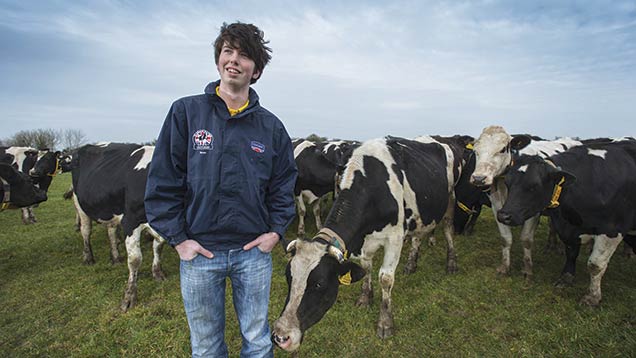Farmer Focus: Milk price cuts dominate conversations
 © Jim Wileman
© Jim Wileman Preparations for calving have gone well so far. A good number of animals have been dried off, which has been useful during the dry weather due to restricted grass growth.
Cows have now started grazing stubble turnips, which will extended the rotation. With our round-bale silage costing twice as much as grazed grass, it is an expensive hobby to cut one month only to feed it back the next.
With calving imminent, we have just ordered some more calf hutches ready to house our new arrivals. We have tried a different make this time. Having seen plenty of them in the US, I hope we can have just as much success with them here as they do across the pond.
See also: Read more from our other livestock Farmer Focus writers
They will certainly come in useful next year, as we have decided to serve our bulling heifers with sexed semen this year in anticipation for a fully autumn block-calving herd.
Whether there is any money to be made from milking these heifers is another matter. Any conversations I have in my farming circle evolve around milk prices. The human cost can’t be ignored.
With a price cut, it is never the cow that suffers. She will still receive her medical and nutritional needs – it is the farmer and his family that will go without. As an asset to the business, cows are much valued by the farmer, and his honesty and professionalism will make sure his herd don’t suffer.
The observers and commentators who give an opinion on dairy farmers’ plight mainly roll out the soundbites: Benchmark, cut costs, become more efficient, get bigger, make better use of grass.
For the past half century these same “fixes” have always been offered every time dairy farmers face a crisis. If solving the problem of an unviable dairy farm business is that simple, why hasn’t it worked thus far? Even the most inefficient dairy farmer can’t find enough cost savings or efficiency improvements to make up for his missing milk cheque money.
This is my last article and I wish the new writers the very best of luck in meeting their deadlines. Hopefully they will have some good news to write about over the next few months.
Ross Symons farms 200 dairy cows, including his own small herd of pedigree Holsteins, with his parents near Truro, Cornwall. They are converting their year-round calving herd to autumn block-calving.
